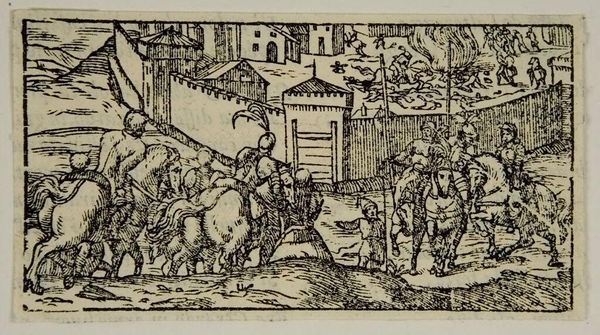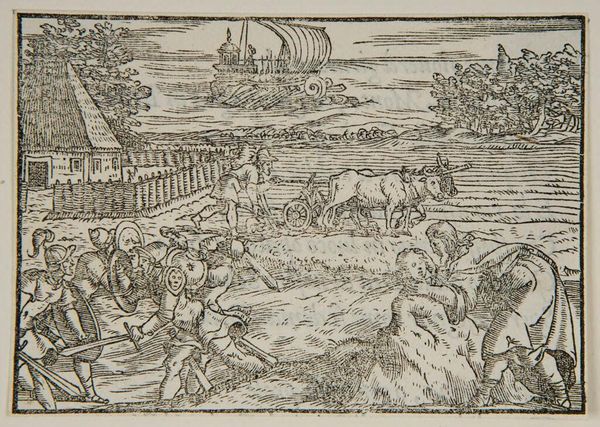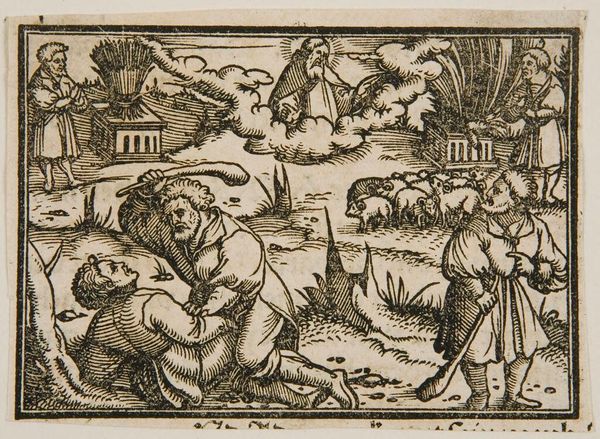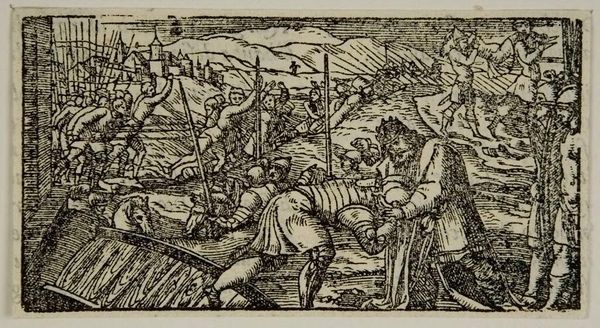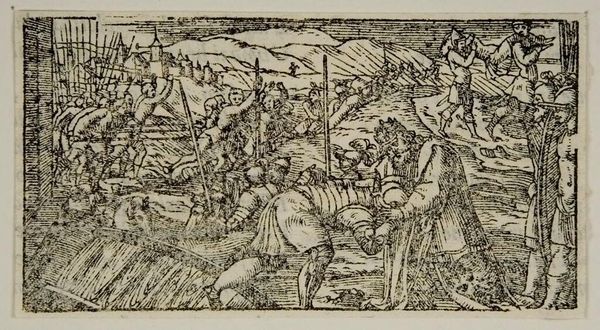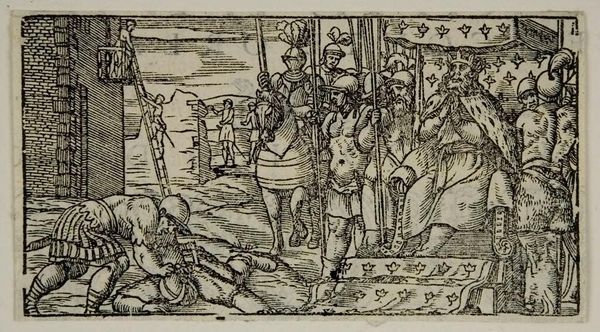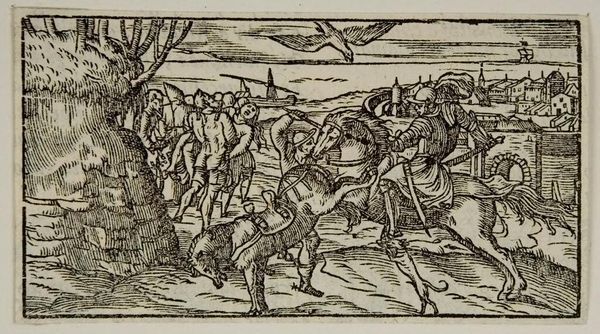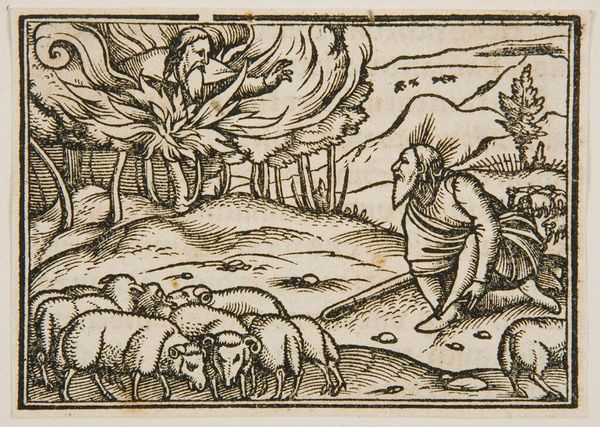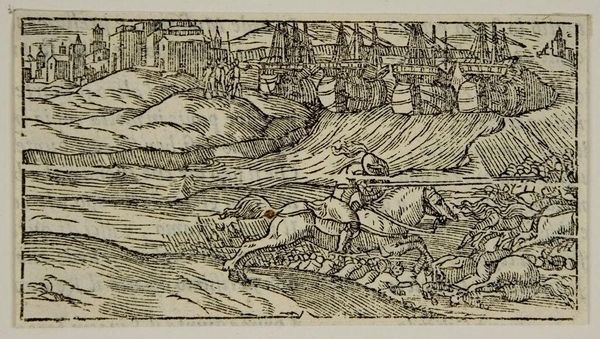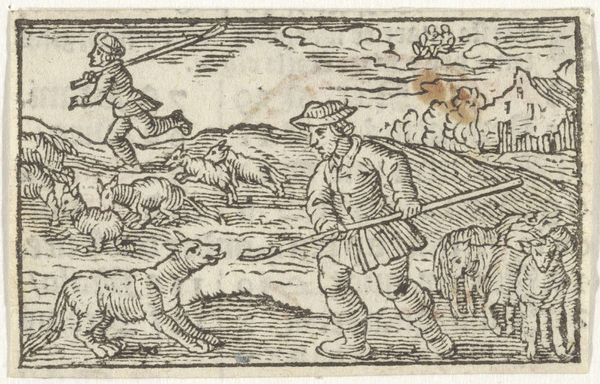
Copyright: CC0 1.0
Curator: Here we have an intriguing print, "Canto 14, p. 115," of unknown origin, housed at the Harvard Art Museums. Editor: It strikes me immediately as a scene of profound unrest, almost biblical, rendered with stark simplicity. The linear hatching conveys a sense of urgency. Curator: The medium is likely woodcut or engraving, allowing for the precise, repeatable marks we see. Consider the labor involved in carving such detail, producing multiple impressions for dissemination. Editor: Absolutely. And look at the fallen figures in the foreground. The artist compels us to consider the socio-political dynamics at play—the cost of conquest, perhaps, or the vulnerability of those without power. Curator: The composition, with its receding planes and regimented figures, suggests a narrative. But the lack of clear authorship and date raises questions about its original context and purpose. Editor: Perhaps intended as propaganda or social commentary. Regardless, it resonates with contemporary anxieties about social hierarchies, power imbalances, and the ever-present specter of violence. Curator: It is a remarkable demonstration of how material processes can transmit potent historical and social narratives, even when divorced from a known creator. Editor: Indeed. An image like this reminds us that art can serve as both a mirror and a catalyst for critical engagement with the world around us, connecting past struggles with present concerns.
Comments
No comments
Be the first to comment and join the conversation on the ultimate creative platform.

